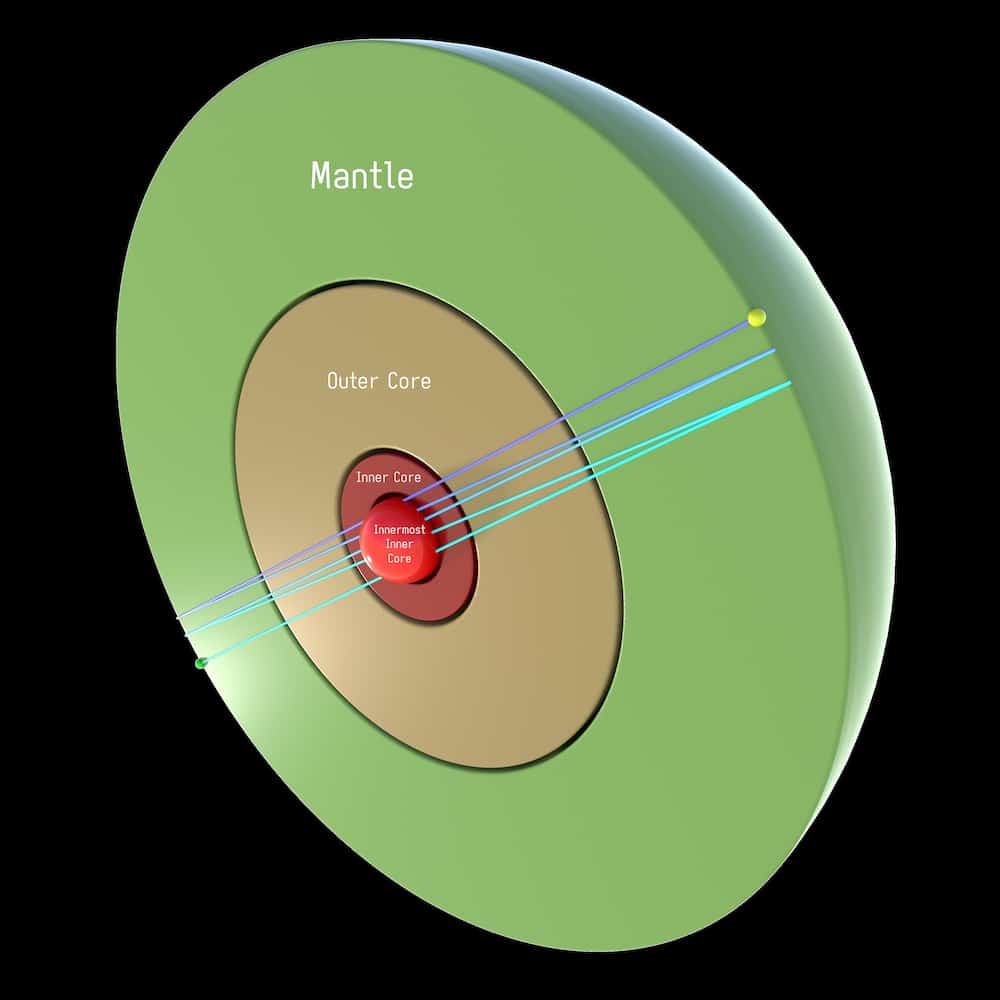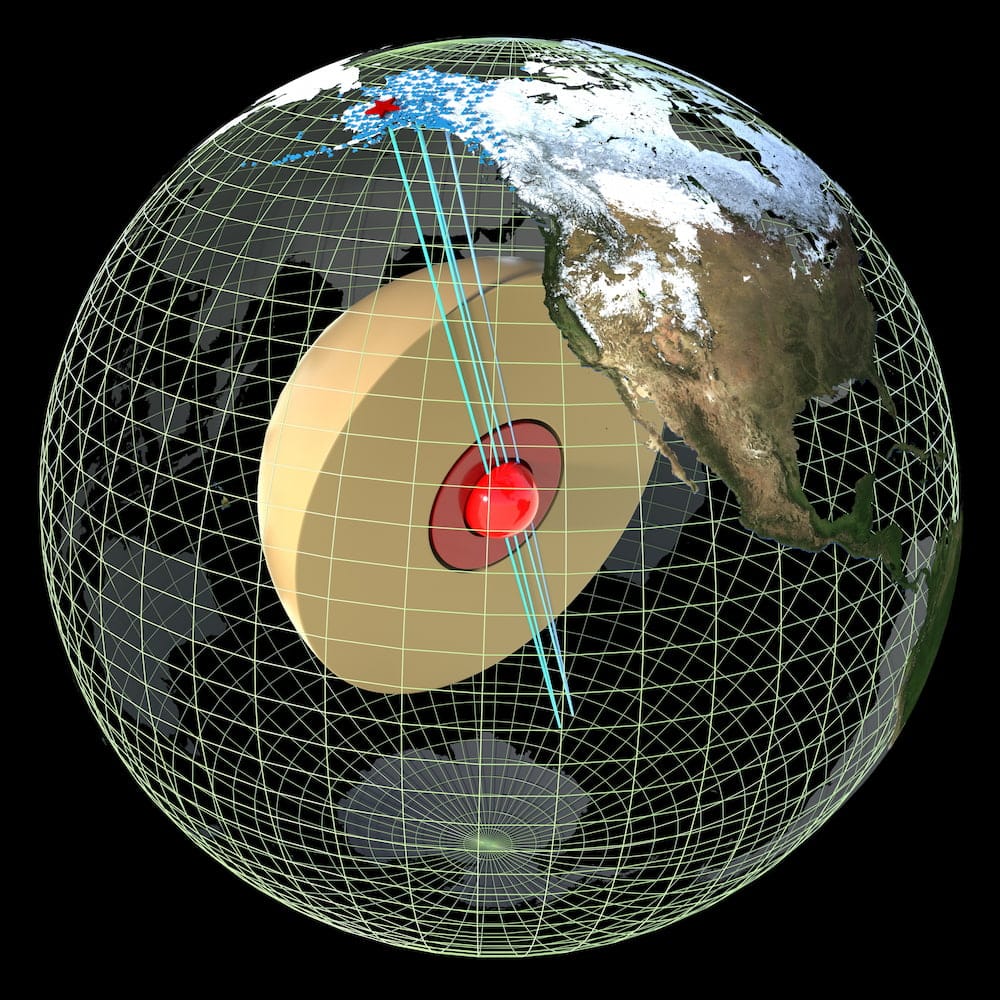Not long ago, it was thought Earth’s structure comprised four distinct layers: the crust, the mantle, the outer core, and the inner core. But seismologists from the Australian National University have discovered a hitherto unknown fifth layer.
The researchers analysed data from about 200 magnitude-6 and above earthquakes from the last decade to shed new light on the deepest parts of Earth’s inner core.
By measuring the different speeds at which seismic waves caused by earthquakes penetrate and pass through the Earth’s inner core, the researchers have documented evidence of a distinct layer inside Earth known as the innermost inner core – a solid ‘metallic ball’ that sits within the centre of the inner core.
“The existence of an internal metallic ball within the inner core, the innermost inner core, was hypothesised about 20 years ago,” Dr Thanh-Son Phạm, from the ANU Research School of Earth Sciences, said. “We now provide another line of evidence to prove the hypothesis.”
Professor Hrvoje Tkalčić, also from ANU, said studying the deep interior of Earth’s inner core can tell us more about our planet’s past and evolution.
“This inner core is like a time capsule of Earth’s evolutionary history,” he said. “It’s a fossilised record that serves as a gateway into the events of our planet’s past. Events that happened on Earth hundreds of millions to billions of years ago.”

The researchers analysed seismic waves that travel directly through the Earth’s centre and ‘spit out’ at the opposite side of the globe (the antipode) to where the earthquake was triggered. The waves then travel back to the source of the quake.
The ANU scientists likened this process to a ping-pong ball bouncing back and forth.
“By developing a technique to boost the signals recorded by densely populated seismograph networks, we observed, for the first time, seismic waves that bounce back and forth up to five times along the Earth’s diameter,” Dr Pham said. “Previous studies have documented only a single antipodal bounce.
“The findings are exciting because they provide a new way to probe the Earth’s inner core and its centremost region.”
One of the earthquakes the scientists studied originated in Alaska. The seismic waves triggered by this quake ‘bounced off’ somewhere in the south Atlantic Ocean, before travelling back to Alaska.

The researchers studied the anisotropy of the iron-nickel alloy that comprises the inside of the Earth’s inner core. Anisotropy means that material exhibits properties with different values when measured along axes in different directions. It is used to describe how seismic waves speed up or slow down through the material of the Earth’s inner core depending on the direction in which they travel. It could be caused by different arrangements of iron atoms at high temperatures and pressures, or preferred alignment of growing crystals.
The seismologists found the bouncing seismic waves repeatedly probed spots near the Earth’s centre from different angles. By analysing the variation of travel times of seismic waves for different earthquakes, the scientists infer the crystallised structure within the inner core’s innermost region is likely different to the outer layer.
They say this might explain why the waves speed up or slow down depending on their angle of entry as they penetrate the innermost inner core.
According to the ANU team, the findings suggest there could have been a major global event at some point during Earth’s evolutionary timeline that “significantly” changed the crystal structure or texture of the Earth’s inner core.
“There are still many unanswered questions about the Earth’s innermost inner core, which could hold the secrets to piecing together the mystery of our planet’s formation,” Professor Tkalčić said.
Their findings were published in Nature Communications.



